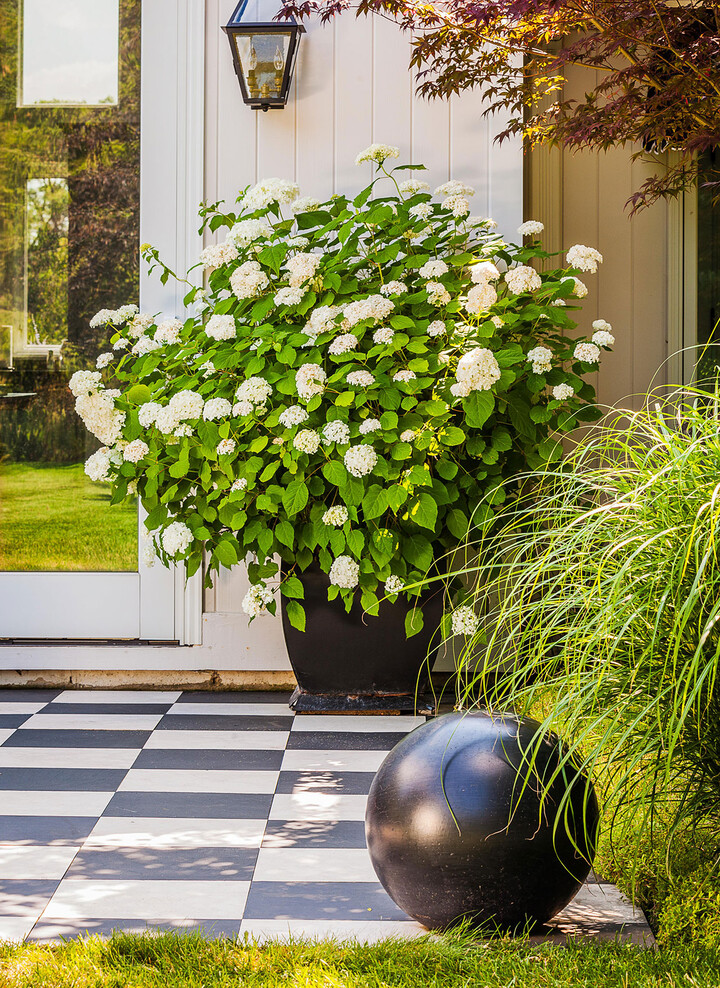Nothing looks more eye-catching in a summer garden than the large, beautiful flower heads of hydrangeas. In order to make sure you get the best floral show from these shrubs, you need to know a little bit about how and when to prune hydrangeas. This can feel confusing because there's no single method that applies to all the different types of hydrangeas. For example, when you might prune a ‘Snowball’ hydrangea differs from when you should cut back ‘Endless Summer’ hydrangea. If you prune them at the wrong time, you could risk cutting off all the flower buds and ending up with no blooms that year. Here's what you need to know about pruning your hydrangeas.

Hydrangea Pruning Tips
In addition to encouraging hydrangeas to produce more flowers, pruning these shrubs each year helps keep them healthy if they get damaged by weather and allows you to shape them however you like. To figure out the best time to prune your hydrangea, start by identifying the type of hydrangea that you have. The most popular varieties of hydrangeas are usually one of two types: macrophylla or paniculata.
How to Prune Macrophylla Hydrangeas
The popular bigleaf or mophead hydrangea (Hydrangea macrophylla) is distinguished by its changing flower colors. When planted in acidic soil, its flowers are blue. In alkaline soil, its flowers are pink. Because this plant blooms on the previous season's growth (often referred to as old wood), they either won't flower or will flower sporadically if you prune them in spring.
For optimal blooms, this green-stemmed hydrangea should be pruned soon after the flowers have faded in late summer. Then the shrub will have a chance to produce new growth where next year's flower buds will form.
Test Garden Tip: When trimming back stems, it's best to make your cuts just above a set of leaves with sharp, clean pruners.
Some newer varieties of bigleaf hydrangea, including the popular ‘Endless Summer’, have been bred to bloom on new wood as well as old wood. This makes them a better choice for colder climates because even if the old stems suffer winter damage, new growth will still bloom. This also provides more flexibility in pruning, since you can prune it at any time of the year and it should still bloom. Even so, pruning right after bloom will maximize future flowering.
How to Prune Paniculata Hydrangeas
Paniculata hydrangeas (Hydrangea paniculata, which includes popular varieties such as ‘Limelight’) as well as smooth hydrangea (Hydrangea arborescens, best known for the variety ‘Annabelle’) bloom on new wood, meaning that same year's growth. Shrubs that flower on new wood generally start blossoming later than old wood bloomers. When to prune these woody-stemmed hydrangeas is not critical as bigleaf varieties, as long as you avoid pruning when the flower buds are opening.
Test Garden Tip: When pruning hydrangeas in general, it's best to remove no more than one-third of the plant at any one time when they are actively growing.
Your objective determines how you prune paniculatas. If you are just doing some shaping of plants that are too tall, you can sheer off the ends of each branch. If you need to do a severe pruning to rejuvenate a spindly shrub, you can cut all the branches back to about a foot above the ground in late winter or early spring when it's still dormant. This will cause the plant to produce lots of fresh new growth and you'll still see flowers later that same year.

Hydrangea Planting and Watering Tips
Hydrangeas can be planted at almost any time of year, except when the ground is frozen in winter. It's best to plant your hydrangeas at the same soil depth as they're at in their nursery pot. Check the guidelines on the plant tag to be sure that you space the plants properly. Some hydrangeas can get quite large, while others are bred to stay more compact, perfect for containers.
Along with pruning, properly watering your hydrangeas is crucial to helping them look their best. Even a day or two without water during the heat of summer can affect them, so be sure the soil they're in doesn't have a chance to dry out. If you notice that your hydrangea is wilting, give it a good soaking and it should perk back up quickly.